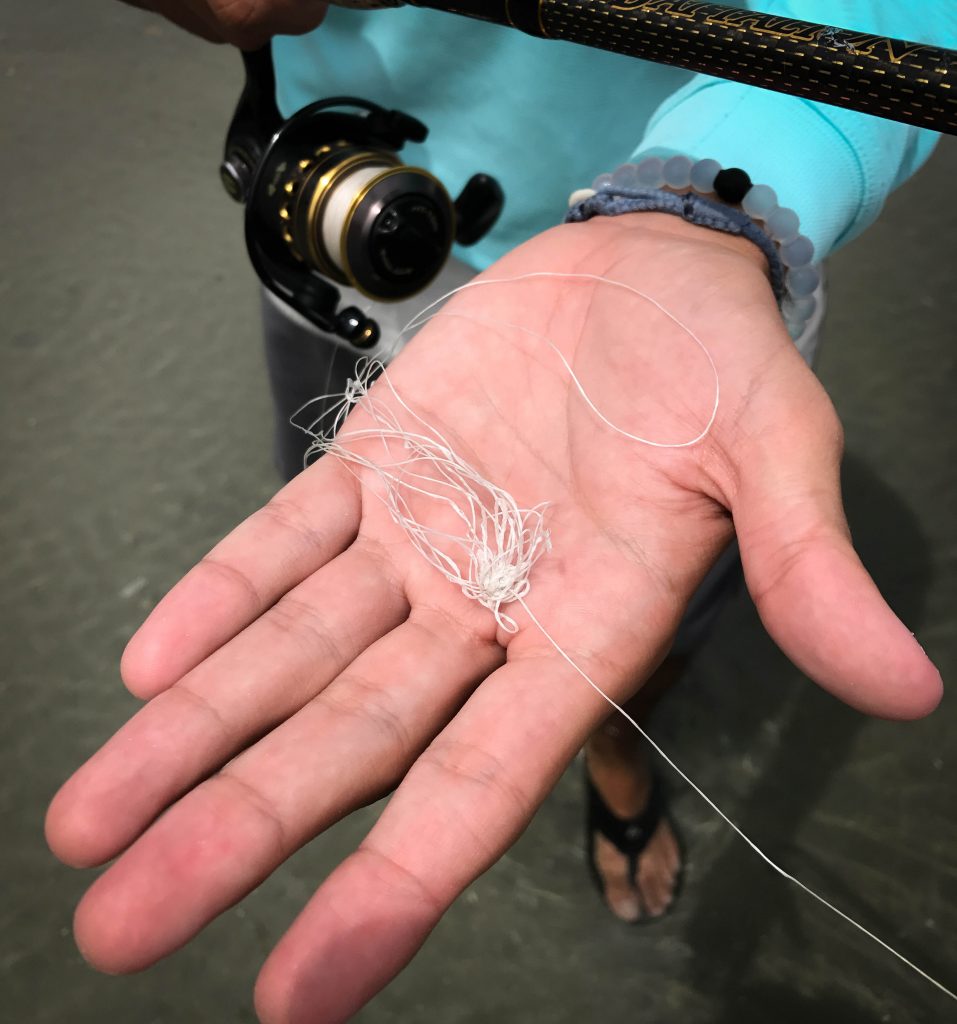Braided fishing line is a fantastic choice for many inshore fishing adventures. It offers impressive strength, thin diameter for smooth casting, and excellent suppleness. However, braided line also has some unique handling considerations.

What is Braided Line?
Braided line is typically constructed by weaving together 4 or 8 individual strands (carriers) of polyethylene. While 8-carrier lines are generally more expensive, they offer smoother performance and longer casts due to their tighter construction.
Line Selection:
Line manufacturers offer various braided lines with unique features. Here are some examples:
- Daiwa J-Braid: This 8-carrier line boasts a round braid for exceptional casting.
- Suffix 832: This 8-carrier line incorporates a GORE Performance Fiber strand, which enhances abrasion resistance and minimizes water absorption.
- PowerPro: PowerPro offers a variety of braids, including the thin, 4-strand Maxcuatro for finesse applications.
Spooling Up for Success:
To get the most out of your braided line, spooling it tightly and evenly onto the reel is crucial. Loose line can cause slippage during casts and under pressure. Here are two options for achieving a tight spool:
- Reel Spooling Machine: Many tackle shops offer spooling machines that ensure a tight and even application of line.
- Buddy System: If a machine isn’t available, enlist a friend to hold the spool and apply tension as you slowly reel the line, maintaining a slight bend in the rod.
Preventing Wind Knots:
Wind knots are a common challenge with braided line due to its slick surface. Here are two ways to minimize their occurrence:
- Braid-Ready Spools: Many modern reels, like the Penn Clash with its “Braid Ready Spool” feature, have a textured surface that helps grip the braid and prevent slipping.
- Electrical Tape Trick: If your reel doesn’t have a braid-ready spool, apply a small piece of electrical tape tightly around the spool. This creates a textured surface for the braid to grip.
Maintaining Line Tension:
Develop the habit of pulling a few inches of drag after every few casts. This ensures the line stays tight on the spool and helps eliminate slack that can lead to wind knots. This is especially important when using lightweight lures that don’t put much tension on the line.
Dealing with Wind Knots:
Despite your best efforts, wind knots may still occur. Here’s how to handle them:
- Patience is Key: Don’t yank on the knot! This will only tighten it and force you to cut the line.
- Work from the Center: Carefully pick away at the knot from the center outwards, unraveling the loops until you can remove it entirely.
- Lubrication Option (Optional): Some anglers recommend applying Chapstick to the knot for lubrication, which can help it loosen and come undone more easily.

By following these tips, you can master the use of braided fishing line and experience its advantages for your inshore fishing adventures.
Images/Source: FloridaSportsman





